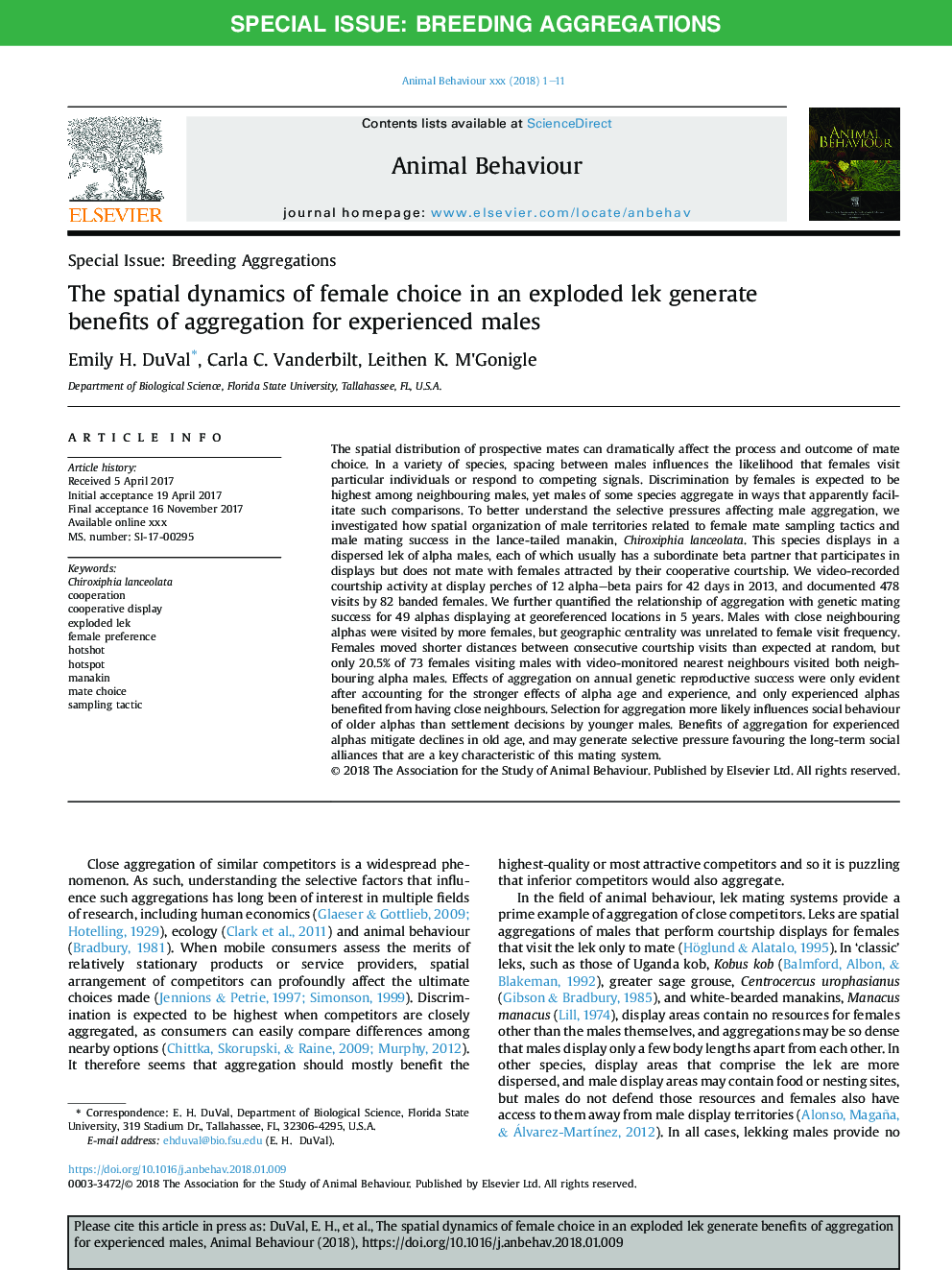| Article ID | Journal | Published Year | Pages | File Type |
|---|---|---|---|---|
| 9954594 | Animal Behaviour | 2018 | 11 Pages |
Abstract
The spatial distribution of prospective mates can dramatically affect the process and outcome of mate choice. In a variety of species, spacing between males influences the likelihood that females visit particular individuals or respond to competing signals. Discrimination by females is expected to be highest among neighbouring males, yet males of some species aggregate in ways that apparently facilitate such comparisons. To better understand the selective pressures affecting male aggregation, we investigated how spatial organization of male territories related to female mate sampling tactics and male mating success in the lance-tailed manakin, Chiroxiphia lanceolata. This species displays in a dispersed lek of alpha males, each of which usually has a subordinate beta partner that participates in displays but does not mate with females attracted by their cooperative courtship. We video-recorded courtship activity at display perches of 12 alpha-beta pairs for 42 days in 2013, and documented 478 visits by 82 banded females. We further quantified the relationship of aggregation with genetic mating success for 49 alphas displaying at georeferenced locations in 5 years. Males with close neighbouring alphas were visited by more females, but geographic centrality was unrelated to female visit frequency. Females moved shorter distances between consecutive courtship visits than expected at random, but only 20.5% of 73 females visiting males with video-monitored nearest neighbours visited both neighbouring alpha males. Effects of aggregation on annual genetic reproductive success were only evident after accounting for the stronger effects of alpha age and experience, and only experienced alphas benefited from having close neighbours. Selection for aggregation more likely influences social behaviour of older alphas than settlement decisions by younger males. Benefits of aggregation for experienced alphas mitigate declines in old age, and may generate selective pressure favouring the long-term social alliances that are a key characteristic of this mating system.
Related Topics
Life Sciences
Agricultural and Biological Sciences
Animal Science and Zoology
Authors
Emily H. DuVal, Carla C. Vanderbilt, Leithen K. M'Gonigle,
